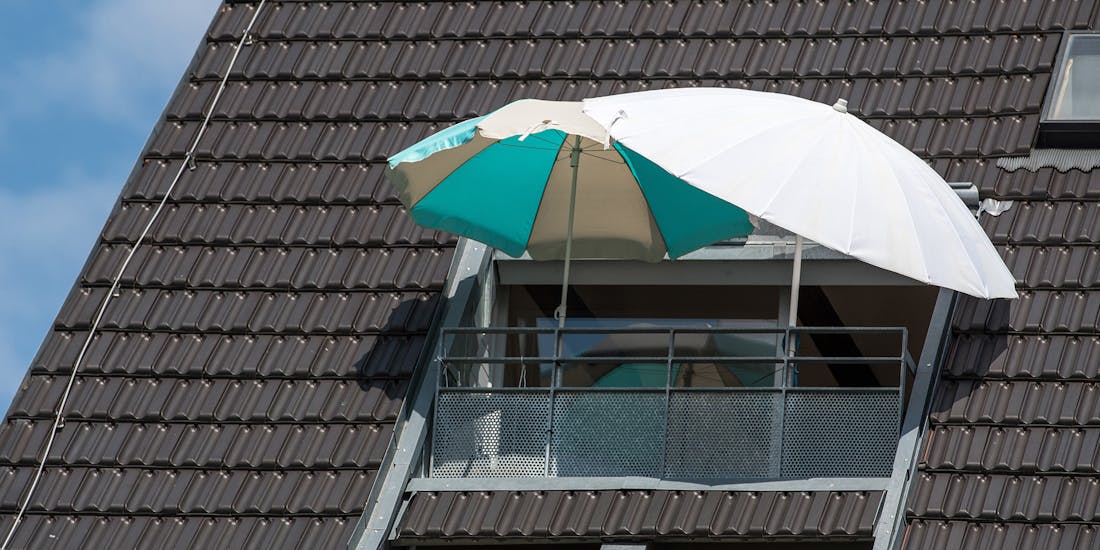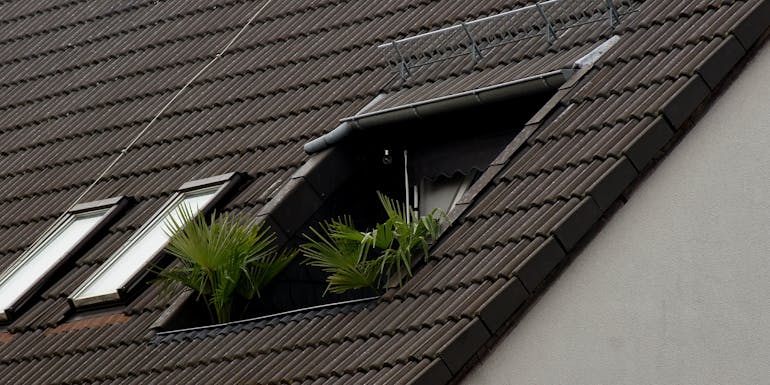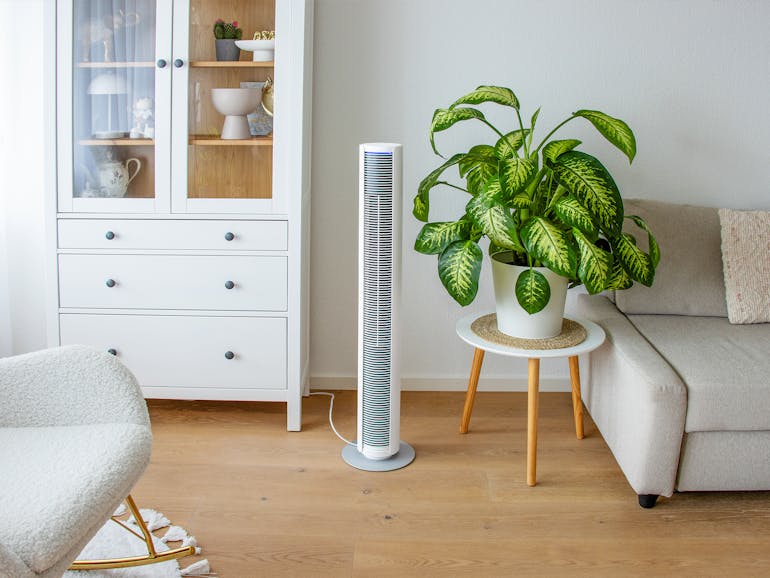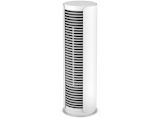
Joana Deplazes, 16 July 2025
Cool flat
5 practical tips for combating heat in the attic
Rising temperatures change the indoor climate in attic rooms, which is particularly noticeable in summer. The sun heats up the roof intensely, which can quickly make the interior rooms warm on hot days. But don't worry, not every attic apartment automatically becomes a heat trap. With a few simple measures you can significantly improve the indoor climate. Are you wondering what you can do about the heat in your attic? Here are some practical tips for everyday use.
Find out in this article
- Why does it get hotter in the attic?
- Tip 1: Use a fan strategically
- Tip 2: Darken windows to keep out the heat
- Tip 3: Ventilate properly and when it makes sense
- Tip 4: Small everyday tricks to combat heat in the attic
- Tip 5: Sleep well despite the heat – fans and tricks for cool nights in the attic
- Enjoy the summer with simple tips to combat heat in the attic
Why does it get hotter in the attic?
Warm air naturally rises, which is why heat accumulates in a house, especially on the upper floors. Attics are particularly affected because the roof absorbs most of the sun's rays and transfers this heat to the rooms below. Poor insulation or large windows cause heat to build up in the attic and the air stagnates in the room.
This can have many effects on sleep, concentration, circulation and even general well-being. This makes it even more important to act early and protect the attic from heat.
Tip 1: Use a fan strategically
A fan is much more than just a device that circulates air. Used correctly, it can become a real everyday hero. It ensures pleasant air circulation and blows warm air away from our bodies, which is very welcome on stuffy days.
It is particularly effective to place the fan next to an open window, but only if the outside air is cooler than the air in the room. In this case, the front of the fan should face the room so that he draws in the cooler air and blows it into the room. At the same time, the warm air inside is pushed out and replaced.
An additional way to lower the room temperature naturally is to combine a fan with a frozen water bottle. To do this, fill an empty PET bottle about two-thirds full of tap water. It is important to leave the top of the bottle free so that the ice can expand as it freezes. Glass bottles are unsuitable as they could burst during the freezing process. The tightly sealed bottle should be placed in the freezer for at least six hours, preferably overnight.
Once the water is completely frozen, place the bottle in an elevated area of the room, such as on a shelf. Be sure to place a bowl or plate underneath to catch any condensation and protect furniture or floors from moisture. Position the fan at a distance of about 50 centimeters so that the air flows directly past the ice bottle. This will cool the air pleasantly before it spreads throughout the room.
Tip 2: Darken windows to keep out the heat
Windows should be protected from direct sunlight. Roller shutters are particularly helpful here. By rule of thumb, don't close the roller shutters completely during the day but leave the small slits open. This allows air to circulate and prevents heat from building up between the window and the roller shutter. If air cannot escape, the window will heat up significantly and the heat will still enter the room.
The windows themselves should not be left tilted open all day, as this will allow warm and hot air to flow into the room.
Tip 3: Ventilate properly and when it makes sense
Fresh air is also important in summer. It is advisable to ventilate rooms early in the morning or late in the evening and at night when the outside temperatures are lower. Ideally, you should create a draught by opening windows on opposite sides of the room if this is structurally possible. A hygrometer or thermometer will help you keep an eye on the temperature.
Rule of thumb: if it is 2–3 degrees cooler outside, it is worth ventilating.
Don't worry. This doesn't mean that you can't air your home at all during the day. Brief bursts of ventilation during shady periods, for example when the sky is overcast or when a room is not exposed to direct sunlight, are perfectly fine and can provide fresh air and oxygen without letting in too much heat.
Tip 4: Small everyday tricks to combat heat in the attic
With simple everyday tricks, you can make your attic much more pleasant in summer.
- Hang damp cloths on doors or windows: the slight evaporation effect cools the air a little.
- Switch off electronic devices consistently: even standby mode gives off heat.
- Wear light clothing made of cotton or linen: your skin can breathe and does not store heat.
- Cold foot baths or a spray bottle with water: instant cooling is guaranteed.
- A cool cloth on the back of your neck or forehead: this ensures rapid cooling and relaxed working.
Tip 5: Sleep well despite the heat – fans and tricks for cool nights in the attic
When the heat dominates the day, restful sleep is even more important. Also the bedroom can be made more comfortable in warm temperatures.
- Fan with timer function: provides cool air while you fall asleep and then switches off automatically.
- Light summer bedding: cotton, lyocell, viscose or linen are breathable and pleasant on the skin.
- Cooling mattress topper or light cotton sheet: this can help to reduce heat retention.
- Open windows at night: ideally, a fly screen or mosquito net should be fitted to the window to allow fresh air to enter but prevent insects from getting inside.
- Take a lukewarm shower before going to bed: this allows your body to cool down more quickly.
Extra tip: put a bed bottle filled with cold water in your bed – it will stay cool and help you fall asleep!
Enjoy the summer with simple tips for combating heat in the attic
The summer heat is particularly noticeable under the roof. This is because the sun shines directly onto the roof during the day and the heat accumulates there. At the same time, warm air rises from below, often causing temperatures in the attic to rise significantly higher than on the lower floors.
A strategically placed fan, proper ventilation, darkening the windows and simple everyday tips such as cold foot baths or light clothing can all make a big difference. By combining different measures and adapting them to your living situation, you can significantly reduce the heat in your attic. This will make it noticeably more comfortable under the roof, even in the height of summer.
Want to find out more about how you can protect yourself from the heat in summer and keep your home cool? You can find more information on our information page about cooling your flat.
If you have questions related to indoor room climate, please get in touch with us. Or subscribe to our newsletter to regularly get informed about current topics regarding indoor climate, experience reports or Stadler Form insights.










